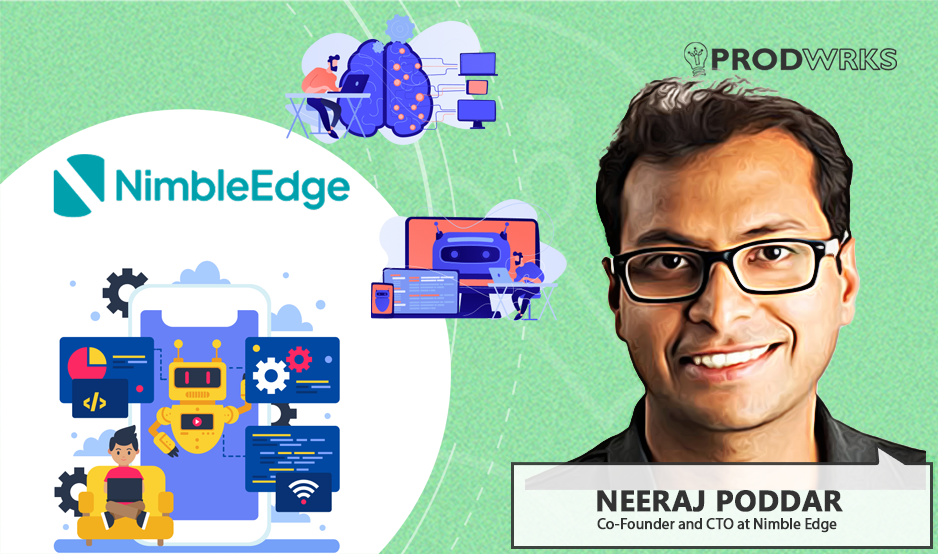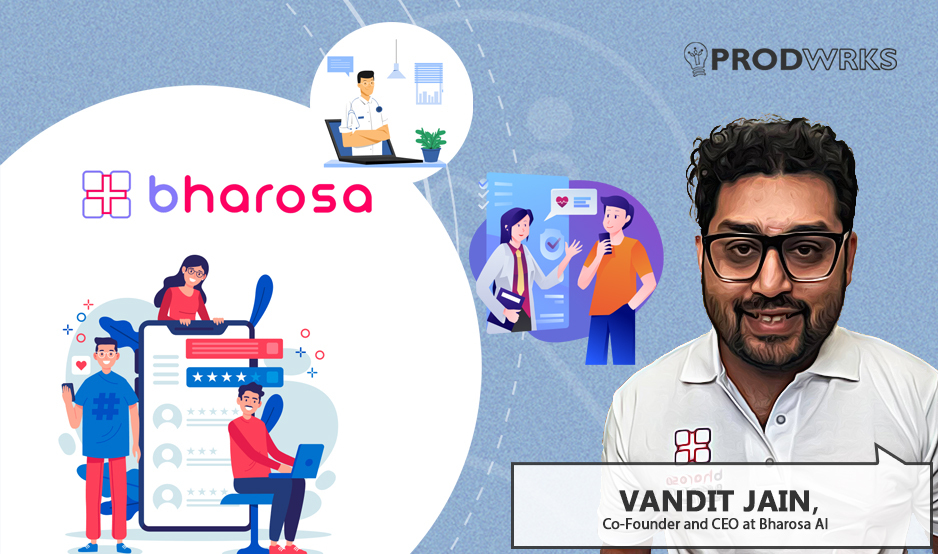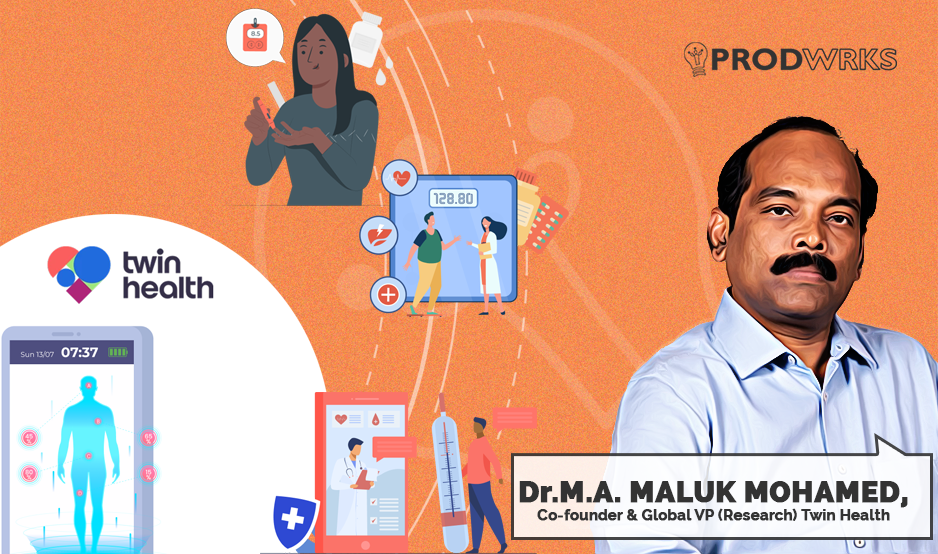
Founders often dream of cracking an ‘unsolvable’ problem. In healthcare, the escalating crisis of chronic metabolic diseases (type 2 diabetes, cardiovascular ailments, hypertension, obesity, etc.) looms particularly large. They often occur together and share common risk factors, increasing the risk of disability, cancers, and even premature death. This complex beast often hands patients a life sentence of illness management, not remission.
This monumental challenge captured the ambitions of veteran entrepreneurs: M.A. Maluk Mohamed and Jahangir Mohammed, who cofounded Twin Health to attack the root cause of these diseases – metabolic dysfunction.
“It’s a proven fact that the root cause of diabetes, heart attack and most chronic conditions is a single problem - dysfunctional metabolism. The challenge was that this root cause was largely invisible, unmeasurable. So we said, ‘if we can build a technology to measure metabolism and go correct it precisely based on what it requires, it will be golden."
Twin Health’s Whole Body Digital Twin™ technology captures over 3,000 data points to clone the body’s metabolic functions. It’s the digital replica of an individual’s chemical complexity. This enables medical practitioners to detect dysfunctions, predict future health states, and deliver personalized, actionable recommendations, helping even “reverse chronic metabolic diseases like diabetes, rather than just managing them.”
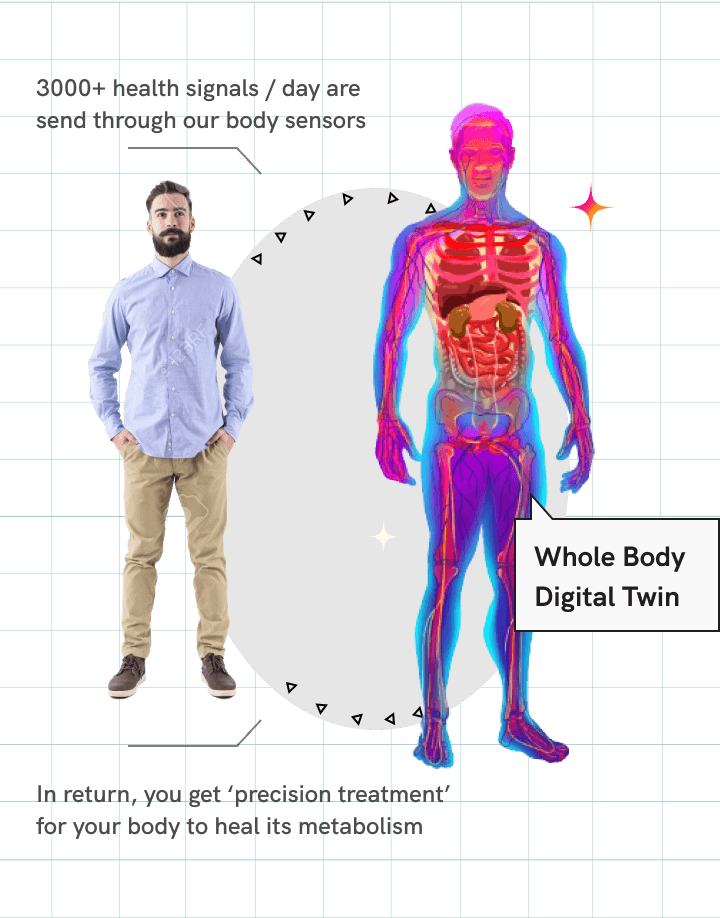
Twin Health has raised over $200Mn in funding from investors like Temasek, Iconiq Capital, and Perceptive Advisors, with a current valuation of around $800Mn after their last Series D round, according to Tracxn.
The evolution of Twin Health from an audacious concept to a clinically validated medical therapy offers a potent case study for product innovators navigating the intersection of deep technology, complex science, and pressing human need.
Digital Twins: From Autonomous Cars to Chromosomes
The founders, Jahangir Mohammed and M.A. Maluk Mohamed, first crossed paths in 2017 at a business conference in Chennai. Maluk, then Chairman of M.A.M. Group of Colleges, was committed to applying technology in healthcare after his son’s liver transplant. He studied how sensors could better monitor transplant patients and facilitate precise treatments.
Meanwhile, Jahangir, a seasoned Silicon Valley veteran, was seeking his next venture. He had sold Jasper Technologies – his company specializing in IoT solutions that notably enabled Tesla’s Digital Twin – to Cisco for $1.6 billion.
At the time, digital twin technology was gaining worldwide attention. Traditionally used in sectors like manufacturing, aerospace, and autonomous vehicles, Digital Twin tech creates a virtual replica of physical systems, like an engine or a driverless car, that continuously updates using real-time data. This facilitates advanced simulation, monitoring, and prediction of performance or failures.
Jahangir and Maluk saw an opportunity to apply the principles of Digital Twin to the most complex system of all – the human body – and tackle one of the greatest challenges to global healthcare systems – chronic diseases. Terry Poon, then Vice-President of Engineering at Jasper, joined them as CTO, completing the founding trifecta.
How Digital Twins Measure Metabolic Mayhem?
“In an autonomous vehicle, digital twins require hundreds of sensors,” Maluk explains. “Each captures a silo of data: brake pressure, engine temperature, GPS location. But these data don’t necessarily correlate. Braking data doesn't tell you much about the air-fuel ratio.”
“Heart rate, digestion, insulin sensitivity, everything is interlinked. This deep biological correlation means that you don’t need hundreds of sensors to figure out what is happening in the human body. Twin Health can correlate data and capture a systemic view of metabolic health with just a minimum number of sensors that track key vital metrics. With the number of sensors reduced, it’s easier to build a solution that’s friction-free for the user.”
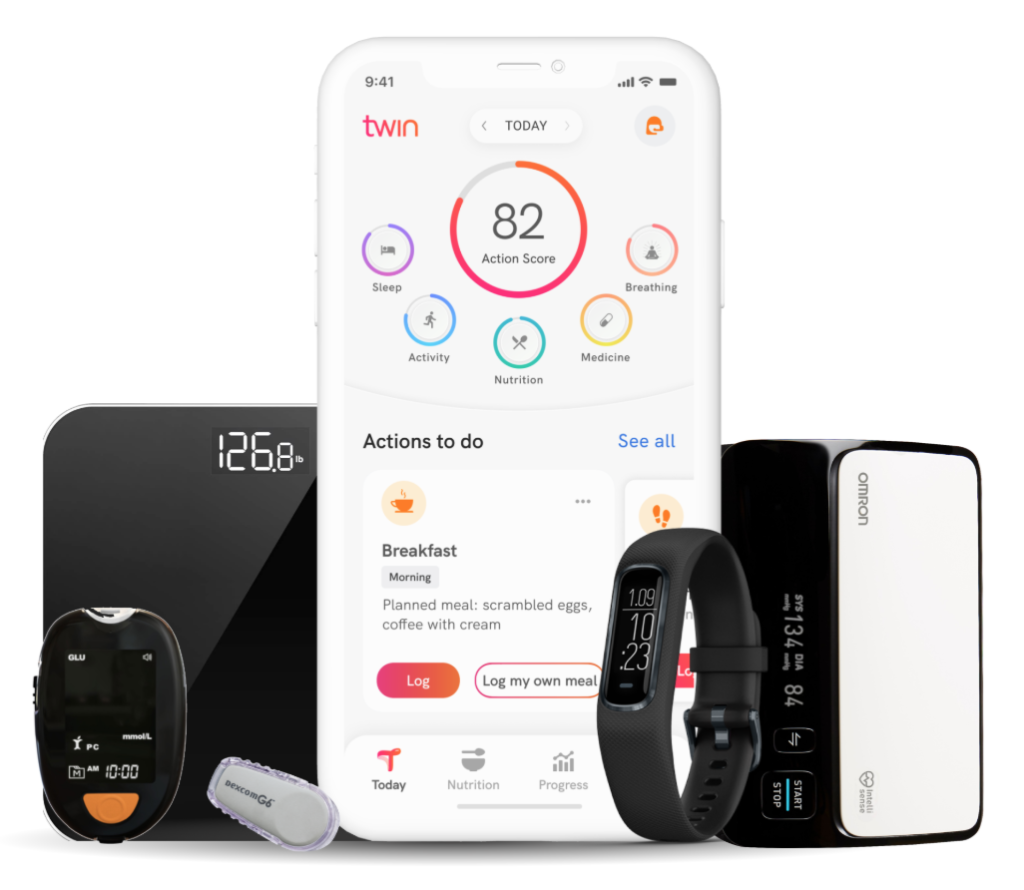
Treating the Root Cause of Chronic Diseases - Metabolic Dysfunction
Maluk says, “Most companies think they can put a patch that gives blood sugar spike data to an AI system that says, ‘do not eat this food’. That's not the way to do it. Anyone who says they are controlling sugars with this method have failed the game. Sugar and cholestrol are just the symptoms. Simple mantra, never try to control the symptom."
“So far, the body was seen in silos. We meet different specialists for various conditions. But even doctors agree that high sugars, high BP, cholesterol, and fatty liver are not diseases by themselves. They are the symptoms. The actual root cause is dysfunctional metabolism. Diabetes eventually leads to high cholesterol; the statins (blood thinners), which are prescribed for cholesterol, lead to diabetes. Look at the circular problem. It's a mess!"
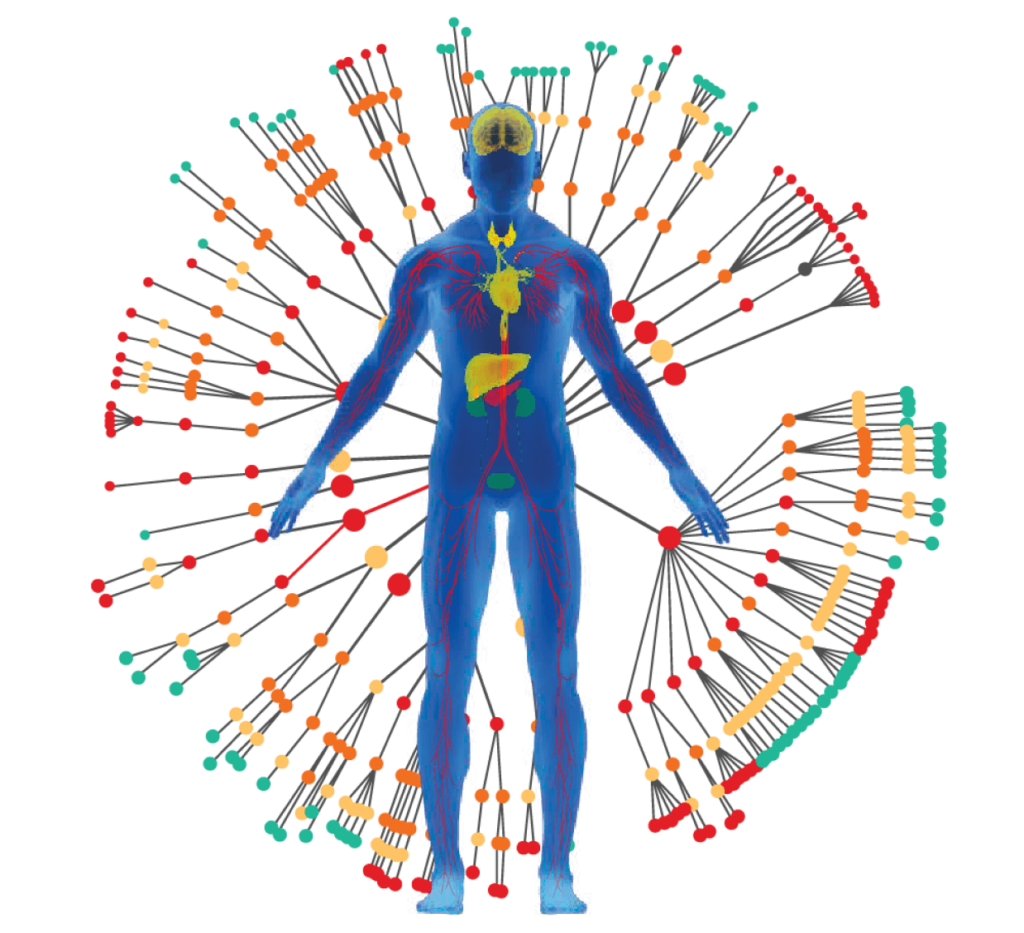
“Today technology serves as a powerful facilitator to measure metabolism today. We are now enabling doctors to understand your body wholistically. It enables them to offer precision treatment to the problem and not just the symptom.”
The Twin Health Journey: From Onboarding to Remission
"The sensors are activated, the member is asked to download the Twin app, and help to get synced up," Dr. Maluk detailed. "The Twin app is an interface to the digital twin."
Each member is assigned a dedicated coach and a doctor. Crucially, “the coach is not here to recommend anything else, other than educating the member to get married to the technology. The coach cannot recommend anything else because it is the digital twin which will recommend what the body wants.”
The program unfolds in phases:
- First Quarter (90 days): Focus on optimizing gluco-toxicity, lipo-toxicity, and inflammation. This is where members often see dramatic initial results.
- Second Quarter: Optimizing other chronic conditions.
- Third Quarter: Optimizing organ health, regulating insulin, and regenerating beta cells, leading to an optimal homeostatic state and metabolic memory (remission).
During the initial 35 days, the digital twin learns the regular food habits of the user and classifies food as green, orange, and red, according to the impact it has on the metabolic activity. Food that may be deterrent to their health based on their body function is classified as ‘red.’
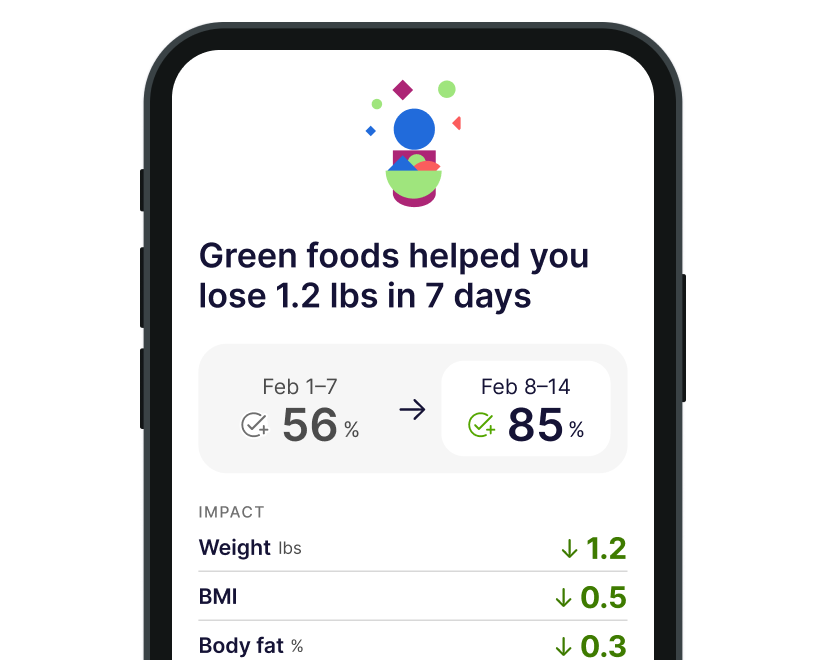
"But they don’t have to let go of 'red' food for life. That’s the beauty of this program. As the user travels through the journey of healing through Twin, the food that was red, start to show as orange and green, and they can start eating it again.”
This dynamic adaptation is a key differentiator from restrictive, static dietary programs.
The app also provides daily guidance cards: sensor sync reminders, activity recommendations, and personalized meal plans. Members can compile their own meals, but the system ensures macro, micro, and phytonutrients are balanced.
"When you log the food that you ate and when you had gone deviated from its recommendation, it will let you know what you have to do to compensate for it. It will say, 'Hey, you ate this. Go walk stairs for two floors.' It precisely tells, because it understands your body."
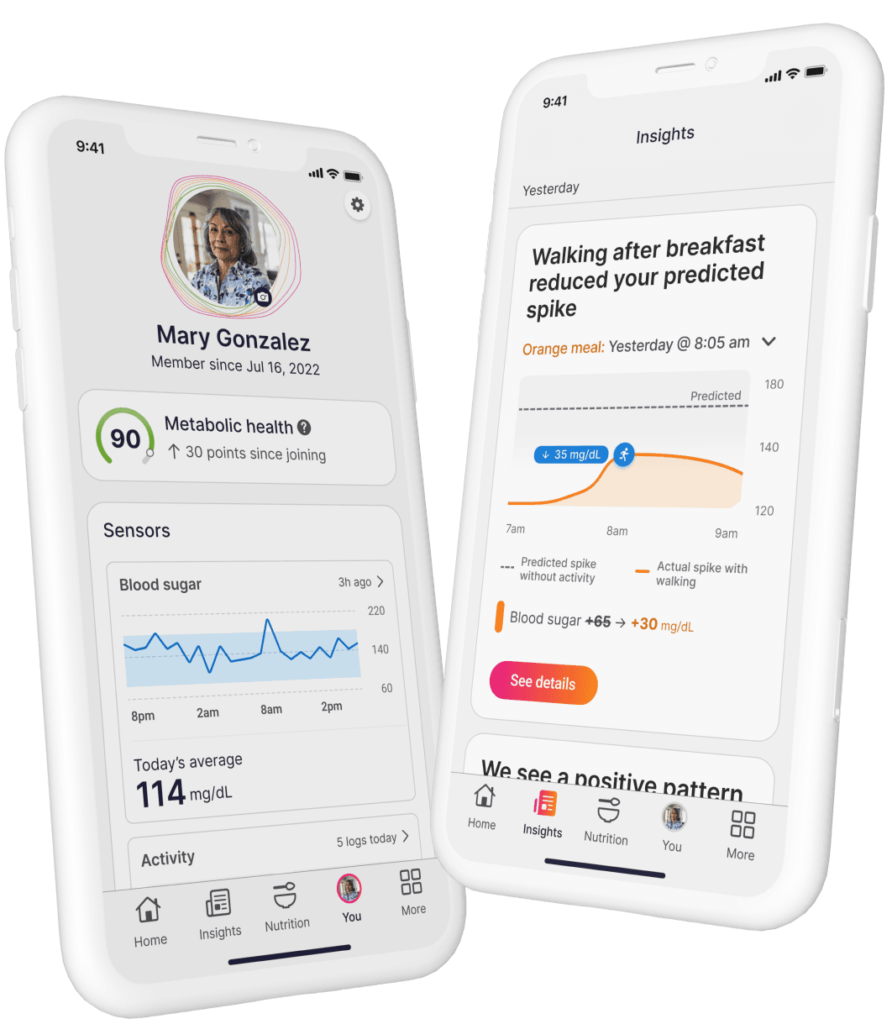
The Gauntlet of Proof: Unprecedented Clinical Validation
In healthcare, especially with a solution as revolutionary as Twin Health, talk is cheap. Proof is paramount. The results, validated by rigorous science, are compelling. The outcome of a Randomized Controlled Trial (RCT) submitted to the American Diabetes Association (ADA) reported that Twin Health has achived the “highest known remission rate for Type 2 diabetes to date.”
Their study, ‘Remission of Type 2 Diabetes with Artificial Intelligence, Internet of Things, and Whole-Body Digital Twin: Initial Six-Months Results of Randomized Control Trial,’ was featured in the ADA’s 82nd Scientific Sessions Press Program.
Key findings from this RCT were striking:
- Patients saw an average HbA1c reduction of 3.1 (from an average baseline of 8.7).
- Over 90% achieved type 2 diabetes reversal (defined as HbA1c less than 6.5%).
- A remarkable 92% eliminated all diabetes medications, including insulin.
- Patients experienced an average weight reduction of 9.1 kg (20 lbs).
- Those with baseline abnormal liver function saw an average ALT (a liver enzyme) reduction of 24 units/L.
“We are the only company who are able to sustain the outcome that we deliver. We have also partnered with the prestigious Cleveland Clinic in the US for a trial to demonstrate phenotypic independence, achieving similar results,” adds Maluk.
“This commitment to clinical validation is non-negotiable,” Dr. Maluk emphasizes. "We strongly believed earlier that clinical trials are not required. But after one year, we realized that for clinical trial, this is not going to work. In healthcare and healthtech, if it is not validated through randomized control trial, it is not successful."
The Human Validation: Beyond Data to "Happy 10"
While data provides the bedrock, the ultimate measure of success is human impact. This focus on holistic well-being led to an internal metric: “We call it as happy 10,” Maluk shares.
A Tale of Two Markets: Navigating the US and India
Twin Health operates in two vastly different healthcare landscapes: the US and India. This dual-market strategy offers unique learnings. In the United States, the model is predominantly B2B, partnering with payers (insurance companies and employers).
Twin Health’s value proposition to the payers is compelling, especially in a high-cost healthcare system increasingly shifting towards value-based care.
"We went and told them that we'll deliver the outcome and we will get paid. You don't pay me upfront... If I reduce the HbA1c by 1%, pay us $1,000. If I normalize the fatty liver, pay me $2,000... The partner, namely the payer, can save more than 70% of the healthcare expenses when they partner with us."
"Our India revenue is peanuts (compared to US revenue). But we wanted to do this goodness to our country. We are not looking at money in India."
"India is seen as the capital of all these chronic diseases," Dr. Maluk laments. "We are sitting with an amazing age group of people with chronic conditions, if you are not trying to jump in and solve the problem, the strength is going to become our weakness."
Raising awareness in India involves a multi-pronged approach: “Participating in conferences, talking to the student community, talking to doctors, making doctors feel that we are not a competitor of them, then we are an enabler to them.”
They are also exploring corporate wellness programs with a “thinner version of Twin” to create an entry point and educate larger audiences. The word-of-mouth referral market is picking up as initial users experience profound results and enroll friends and family.
Lessons from the Trenches: Wisdom for Health-Tech Innovators
Dr. Maluk’s journey with Twin Health offers invaluable, often counterintuitive, lessons for founders in the challenging health-tech space:
- Clinical Validation is Non-Negotiable: “If it is not validated through a randomized controlled trial, it is not successful. No core healthcare startup will be successful without proven clinical trials.”
- Build for Need, Scale for Revenue: “Build a solution for India to scale it in developed countries. The real money is in developed countries, not in India.” Twin Health honed its solution in India before taking it to the US.
- Enable, Don’t Replace, Doctors: “You can be an enabler to the medical fraternity, not a replacement. Technology can do whatever it is; at the end of it, the final shot is given by the doctor.”
- Healthcare is a Business, but Not: “Don’t see healthcare as a business, but it’s a business. But for money, you can’t do it.”
- Focus on the Root Cause: For Twin Health, this was identifying dysfunctional metabolism, a stark contrast to many solutions that merely “put a patch, and they look at, hey, sugar spikes for this food, don’t eat that food. That’s not the right way to do it.”
"Honestly speaking, we are the tip of the iceberg. We don't know how much the digital twin can revolutionize in a big way."


